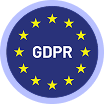Harnessing Map Data for Superior Business Insights


In our digital era, where data-driven decisions have become the norm across industries, web scraping has emerged as a game-changer. This technology empowers businesses to extract vast amounts of information from the web, converting it into actionable insights. Among the plethora of online data sources, one has shown to be particularly resourceful: maps data. This blog delves into the significance of maps data and how businesses can harness its potential through Nimble's Maps API.
The Unparalleled Utility of Maps Data
Maps data is not merely about geographic coordinates; it's a treasure trove of business insights. From customer reviews and business hours to peak times and upcoming events, maps data provides a holistic view of businesses. In a world where local search and user-generated content significantly influence consumer choices, maps data holds the key to understanding market dynamics, customer preferences, and competitive landscapes.
Spotlight on Three Core Use Cases
1. Consumer Sentiment Analysis:
- Example: Consider a restaurant chain looking to expand in a new city. By analyzing user reviews and ratings from map listings, the chain can gauge public sentiment towards similar eateries in the area. Sentiments from reviews, such as "needs more vegan options" or "excellent outdoor seating", offer actionable feedback for tailoring the new outlet.
2. Firmographic Intelligence:
- Example: An investment firm is eyeing the tech startup scene in Silicon Valley. Maps data can provide insights into the number of tech businesses in the area, their offerings, peak business hours, and more, enabling the firm to understand market saturation and identify potential investment opportunities.
3. Contact Data for Businesses:
- Example: A B2B marketing agency wishes to reach out to new businesses in a region. Using maps data, they can extract up-to-date contact information, including phone numbers, emails, and addresses, ensuring their outreach is accurate and efficient.
The Hurdles of Direct Maps Data Collection
Collecting valuable data directly from map platforms can be a daunting task for businesses, especially with several barriers standing in the way:
- Platform Restrictions: As map platforms evolve, they've fortified their walls against automated data extraction attempts. These restrictions aren't just IP-based bans; they encompass CAPTCHAs, AJAX loadings, and more. Such measures can disrupt data collection, make the process tedious, and lead to incomplete or inconsistent data.
- Unstructured Data: Data on map platforms is presented in a plethora of formats. From business listings featuring images, videos, and texts to reviews of varied lengths and sentiments, this diversity poses a significant challenge. Without a streamlined method to collect and structure this data, businesses may struggle with incomplete datasets, inconsistency, or even data that's difficult to interpret and integrate into existing systems.
- Scale and Efficiency: Imagine having to collate data for thousands of businesses across multiple cities or countries. Such a massive data collection exercise demands speed, accuracy, and reliability. Doing this manually or using rudimentary tools can be time-consuming, prone to errors, and incredibly resource-intensive, making it unsustainable in the long run.
How Nimble's Maps API Simplifies the Process
Nimble recognizes these challenges and has engineered its Maps API to overcome these barriers automatically and effortlessly.
- Overcoming Anti-bot Measures: Nimble's Maps API isn't just another scraping tool; it's a sophisticated solution built atop the Nimble Browser. This browser uses advanced AI-driven fingerprinting technology. What does this mean for businesses? Even the most stringent anti-bot measures, from IP bans to CAPTCHAs, are effectively navigated. This ensures that the data extraction process remains smooth, uninterrupted, and most importantly, discreet.
- Transforming Chaos into Structure: One of the standout features of Nimble's Maps API is its ability to deliver structured data outputs consistently. Whether you're extracting multimedia-rich business listings or diverse user reviews, the API processes this data and presents it in structured JSON or raw HTML formats. This not only makes integration with existing systems a breeze but also sets the stage for seamless data analysis, ensuring businesses can immediately derive actionable insights.
- Optimized for Large-scale Operations: Nimble understands that in the business world, time is of the essence. The Maps API has been designed with efficiency at its core. With robust scalability features, including batch processing capabilities, businesses can undertake large-scale data extraction tasks with ease. Whether you're looking to collect data across vast geographies or for a varied set of business categories, Nimble's API ensures the process is fast, accurate, and devoid of the usual hiccups you'd associate with such a mammoth task.
Conclusion
Maps data is a goldmine for businesses, offering insights that can shape strategies, drive engagement, and boost growth. With the challenges of direct data collection being smoothly addressed by Nimble's Maps API, businesses now have a clear and efficient path to harness the unparalleled power of maps data.
FAQ
Answers to frequently asked questions

















